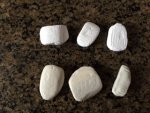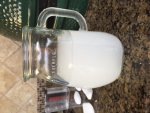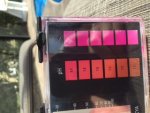Looking for some ideas/feedback. I use borax in my 11,600 gal. salt pool. Initially I was adding as per TFP guidelines. I began accumulating hardened "blocks" of borax in my pump pot. Wasn't sure what precipitated them to appear. Posted on the forum and suggestion was made to add borax via skimmer in a sock. So I've been doing that thinking that would end my borax chunks. As temps cooled we started using our spa which normally runs with a spillover into the pool. I noticed when we isolated the spa for a soak, the "borax cubes" would appear in the pump pot. My VS pump normally runs at 1800rpm's for circulation and 3000rpm's when running the spa. Appears the additional pressure in the lines is causing these cubes to break-free from somewhere in my system and deposit in the pump pot. I'm wondering if adding the borax with the spa-spillover in operation is causing the borax to deposit somewhere in the spa lines and break free when the spa is activated. Should I refrain from operating the spa-spillover when adding borax?
I attached a recent photo. The lighter 3 cubes were collected from the previous weekend and the darker 3 cubes, just this morning 2/23 from using the spa this past Saturday night. Sure would like some insight from forum members regarding this unusual situation and to advise on a remedy.

I attached a recent photo. The lighter 3 cubes were collected from the previous weekend and the darker 3 cubes, just this morning 2/23 from using the spa this past Saturday night. Sure would like some insight from forum members regarding this unusual situation and to advise on a remedy.




